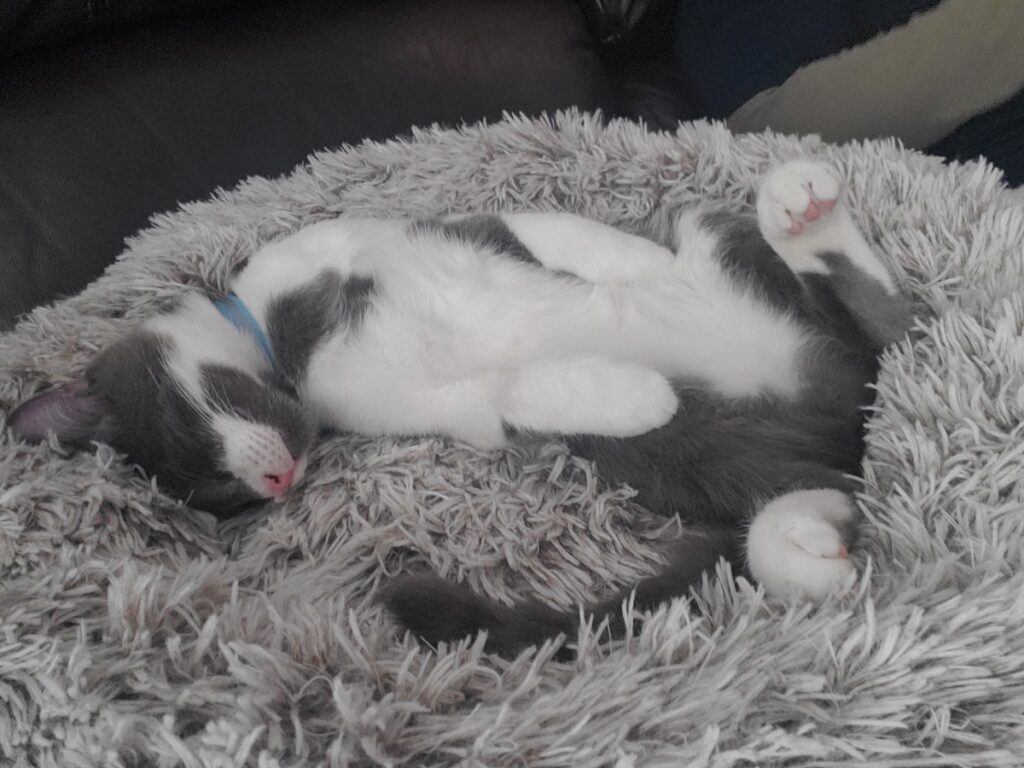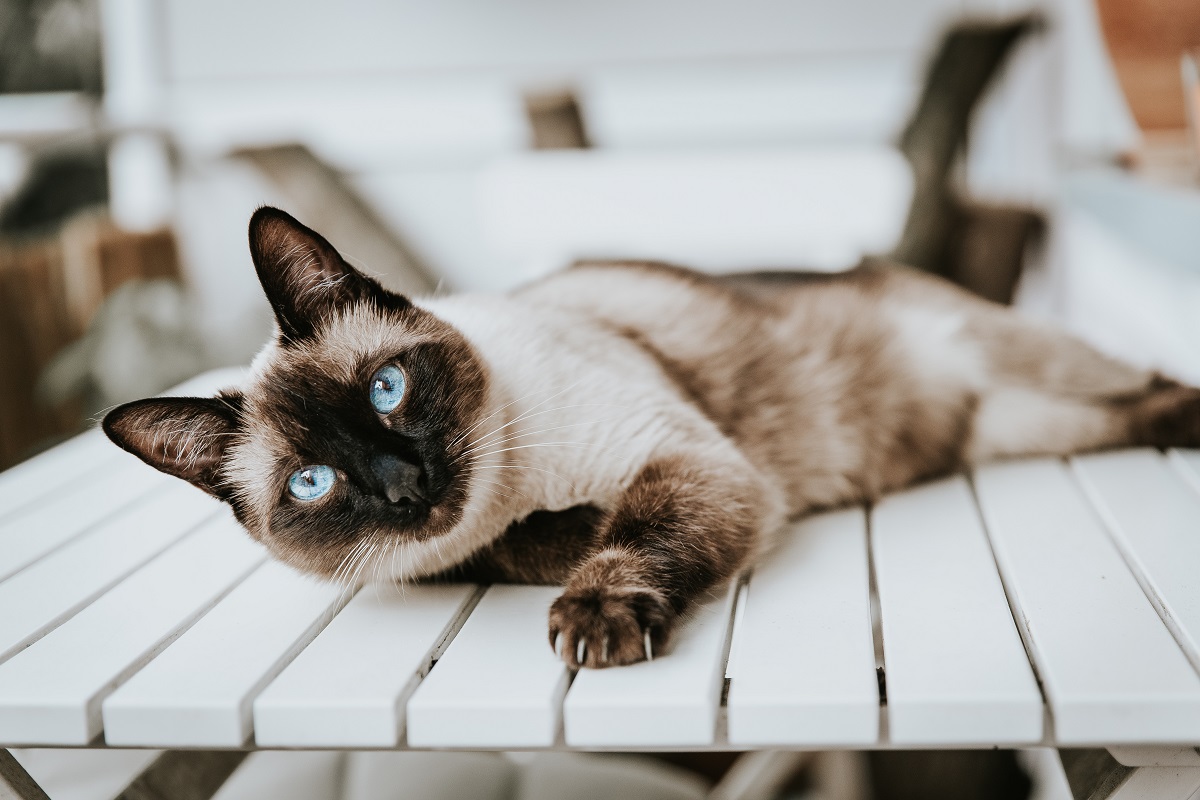When summer hits and the air conditioner is humming, most of us are busy trying to stay cool with fans, iced drinks, and minimal movement. But what about your cat? They are wearing a full fur coat, stretched out in a sunbeam, and somehow seem completely unbothered.
Cats can generally tolerate warm temperatures, but there is a limit to how much heat they can safely handle. While they are better built for heat than many humans, they still need help staying cool when the temperatures rise. The key is understanding what is comfortable, what is dangerous, and how to help them stay safe without blasting the air conditioner all day.
Let’s take a closer look at how cats regulate their body temperature, when the heat becomes risky, and what you can do to keep your feline cool during a heatwave.
How Cats Naturally Stay Cool
Cats are better than most at handling warm weather, thanks to their origins. Domestic cats evolved from desert-dwelling ancestors, and they are surprisingly good at conserving moisture and dealing with higher temperatures. That does not mean they are immune to heat, but they do have some built-in tricks.
Cats regulate body temperature by:
- Finding cool surfaces to lie on, like tile or sinks
- Limiting movement to conserve energy
- Grooming to spread saliva that helps cool the skin as it evaporates
- Sleeping through the hottest part of the day and becoming active at night
They also sweat very lightly through their paw pads. It is not enough to cool their whole body, but it helps a little. Most of their heat release happens through respiration and behavior, not heavy sweating.
This makes them more heat-tolerant than you might think, especially if the environment is shaded, quiet, and well-ventilated.
When It Gets Too Hot for Comfort
While cats are heat-tolerant, there is still a threshold where the heat becomes dangerous. A good general rule is that if it is too hot for you, it is probably too hot for your cat.
Cats are most comfortable in temperatures between 65 and 75 degrees Fahrenheit. Once indoor temperatures climb above 85 degrees, you should start paying closer attention to how your cat is behaving.
Signs your cat may be overheating:
- Panting or rapid breathing
- Restlessness or pacing
- Drooling or open-mouth breathing
- Lethargy or refusal to move
- Vomiting or weakness
These signs could indicate heat exhaustion or even heatstroke, which can be life-threatening. Cats with flat faces, like Persians and Himalayans, are especially vulnerable to heat-related problems because they have more difficulty breathing in hot weather.
Kittens, senior cats, and those with health conditions are also at higher risk and may need extra help staying cool.
What to Do If You Don’t Have Air Conditioning
Not every home has air conditioning, and running it constantly is not always practical. The good news is that you can keep your cat safe and comfortable in warm weather without relying on AC, as long as you take a few smart precautions.
Try these strategies:
- Keep blinds or curtains closed during the day to block sunlight
- Provide multiple cool, shaded resting spots with good air flow
- Use fans to circulate air and reduce stuffiness
- Freeze water bottles or damp towels and place them in your cat’s favorite resting area
- Offer fresh, cool water at all times in more than one spot
- Groom your cat regularly to remove excess fur, especially during shedding season
- Use a cooling mat or damp towel for them to lie on if they are open to it
Your cat will naturally seek out the coolest place in the house, so give them options and let them decide where to go.

Oh. My. God. It’s SOOOOO freaking hot. How’s a kitty supposed to sleep when the humans are too cheap to turn on the air conditioning?? My fur is making me feel like I’m wearing a winter coat in the middle of the Sahara! This heat makes me wish I was one of those silly hairless cats. Okay, well not really. That would just be… I don’t know, embarrassing. #HotKitty #TurnOnTheAC #SweatingWhiskers #HumansAreCheapskates #HairlessKittiesAreSilly
Joey
Should You Be Worried If Your Cat Is Sleeping All Day?
It is perfectly normal for cats to become less active when the weather is hot. Cats are already famous for napping the day away, and in warmer conditions, they take that skill to the next level. It is part of their energy conservation strategy.
As long as your cat is still drinking water, eating, and showing normal interest in their surroundings during cooler hours, there is no reason to worry. Lying low during the day and becoming more active in the evening is completely normal feline behavior in the summer.
However, if your cat becomes extremely lethargic or unresponsive, especially if it is combined with heavy breathing or refusal to eat or drink, it is time to check in with your vet.
Can Fans and Open Windows Help?
Yes, as long as you are careful. A fan that creates a breeze can make a big difference in comfort. Cats enjoy resting near moving air, especially when the air is cooler than the surrounding room.
If you choose to open windows, make sure there are secure screens in place. Cats are curious, and an open window without protection is an open invitation to trouble. Even high windows can be risky if your cat tries to jump or balance on the ledge.
Providing cross-ventilation by opening windows on opposite sides of your home can help lower the indoor temperature without the need for AC. Just make sure it is safe and your cat cannot get out.
Final Thoughts: Heat Awareness Keeps Your Cat Cool and Safe
Cats may be more heat-tolerant than we give them credit for, but that does not mean they can be left to fend for themselves when the temperature climbs. With some thoughtful adjustments to your home setup, you can help your cat stay cool, comfortable, and healthy without having to crank the AC.
Watch their behavior, offer cool spots to rest, and always keep water available. If you live in a hot climate, consider investing in a few heat-friendly tools like cooling mats or fans made for pets.
Cats may look like they are lounging without a care in the world, but they rely on you to keep their environment safe. Give them the tools they need to beat the heat, and they will thank you with a nap in the shade and maybe even a slow blink of approval.
Sources:
Keeping Pets Cool Without AC https://www.petmd.com/cat/general-health/how-keep-cat-cool-summer
Understanding Heatstroke in Cats https://www.humanesociety.org/resources/heatstroke-pets
Hot Weather Pet Safety https://vcahospitals.com/know-your-pet/hot-weather-pet-safety
How Cats Regulate Body Temperature https://www.icatcare.org/advice/keeping-cats-cool
Recent Posts
Your Cat Might Be a Furry Little Healer… or at Least a Fuzzy Alarm System If you’ve ever had your cat suddenly become extra clingy when you’re under the weather, you’re not alone. From...
Cats are experts at hiding things, socks under furniture, their disdain for your playlist, and, unfortunately, symptoms of illness. In the wild, showing weakness could make them a target, so even...


